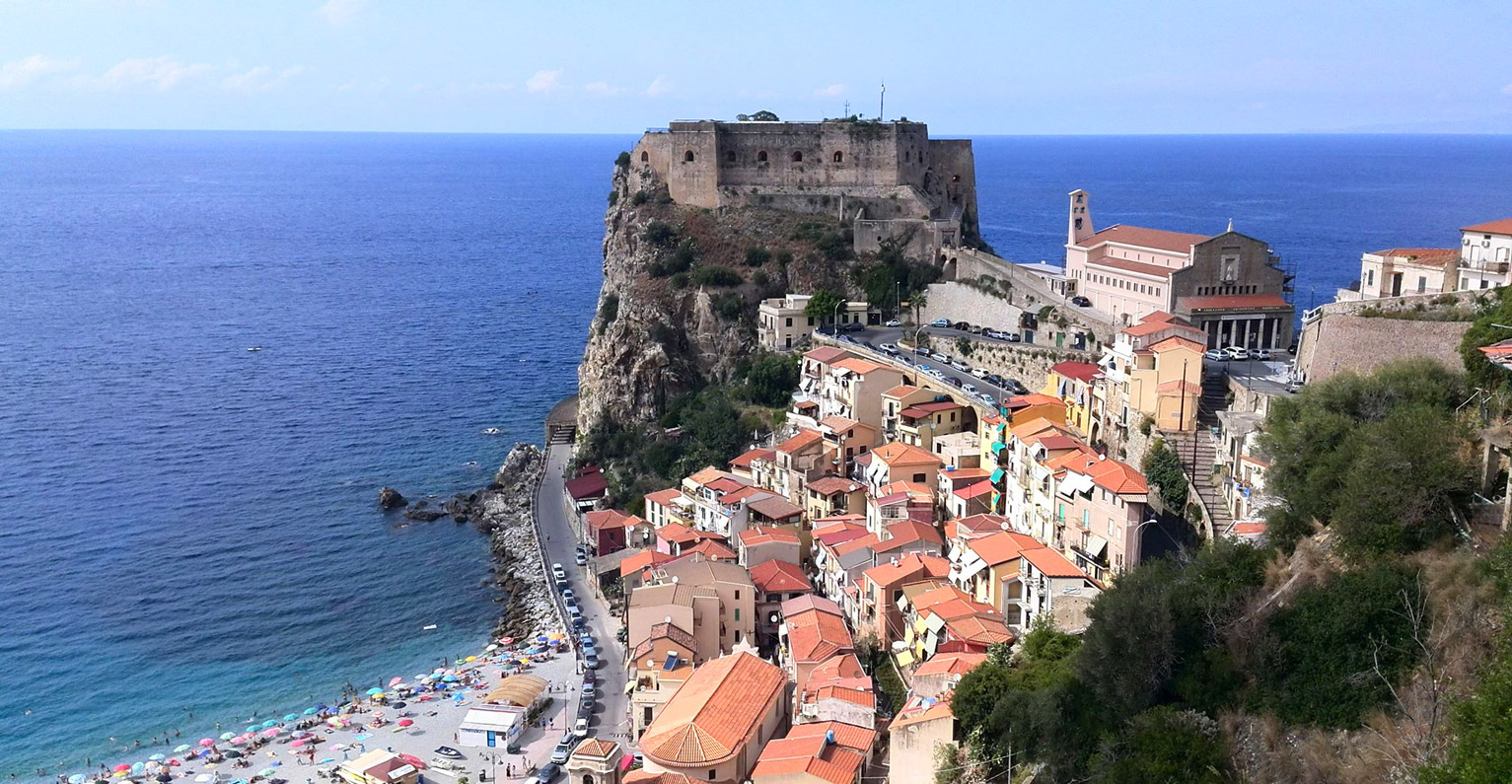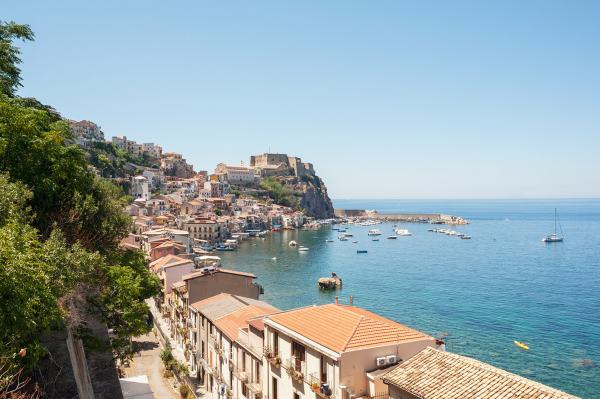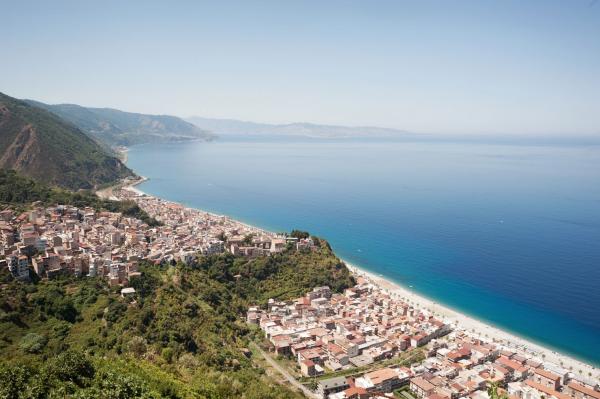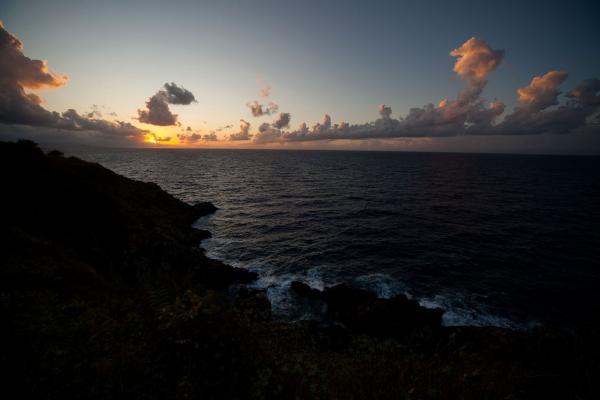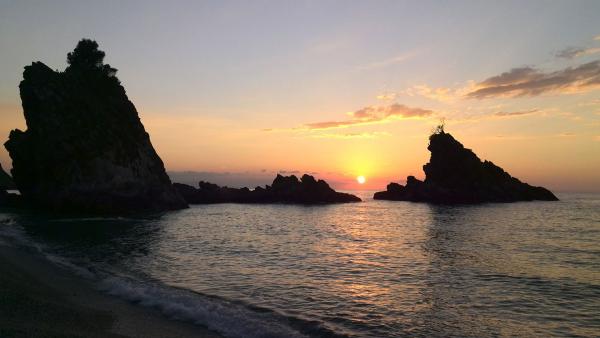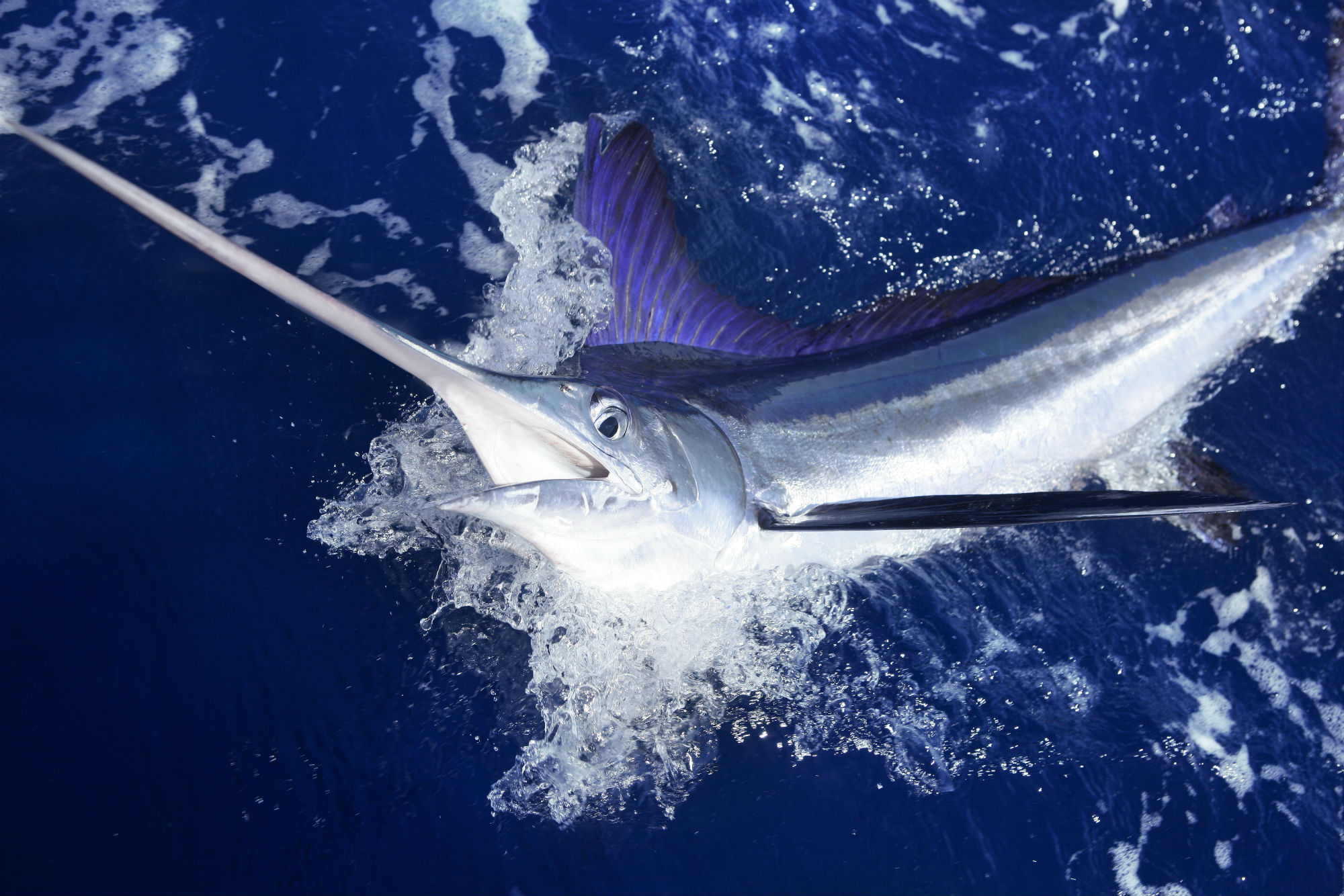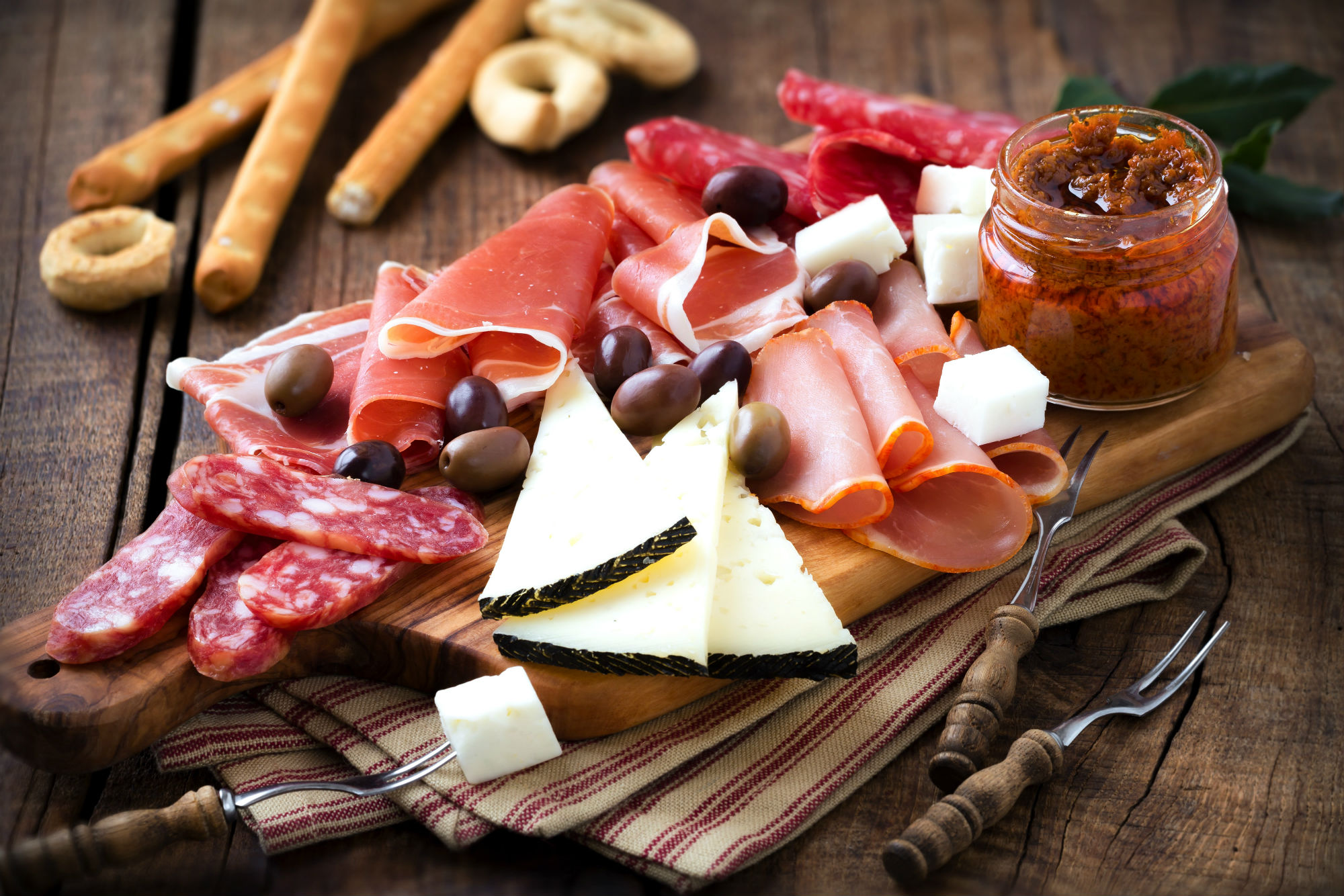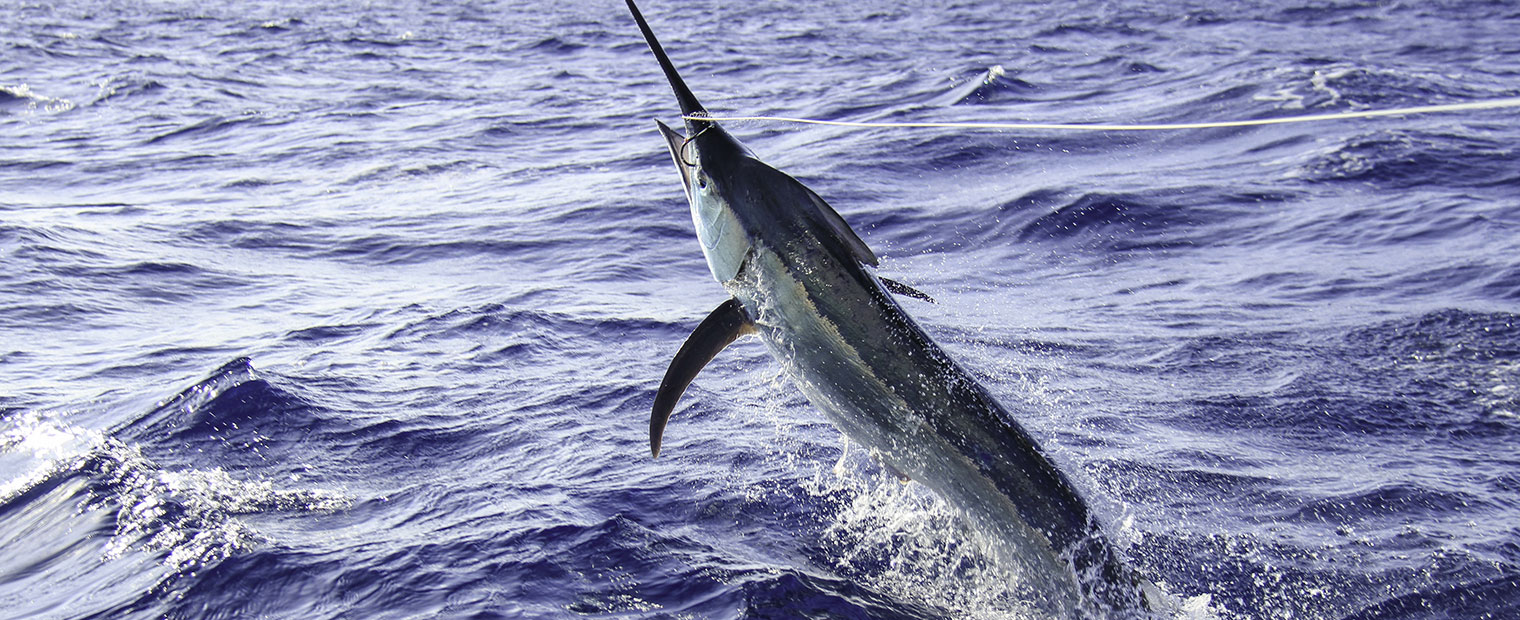At the end of the Trojan War, Ulysses undertook the return journey to Ithaca, of which he was sovereign. His journey, however, was a long and troubled journey, full of experiences and adventures. One of these adventures took him to the Strait of Museum, between Scylla and Charybdis. The beautiful nymph Scilla, transformed into a horrendous monster by the sorceress Circe, was the nightmare of sailors on the Calabrian coast, facing the fortress of what is known today as Scilla. On the Sicule shores, it was the monster Cariddi that swallowed the ships of the adventurers (in those waters, great and dangerous vortices are formed for the boats still today).
After having overcome a long series of obstacles, such as the mermaids with an enchanting voice, Ulysses therefore faced the most demanding, and, at the same time, most atrocious trial as he himself recounted: “We sailed moaning on the strait: on one side it was Scilla, on the other the clear Charybdis began to horribly suck the salsa water of the sea. When he vomited, he gurgled all over, as like a great fire on a lebete: from above, the foam fell on the top of both rocks. However, when sucked the salty seawater, shuddering appeared at the bottom, the rock around bellowed hideously, and below appeared the black earth of sand. There was a pale look of anguish. We turned our gaze to it, fearing the end, and behold, Scilla took me from the well-quarried ship, the six best companions for her arms and strength” (from: The Odyssey, translated by G. A. Privitera, Mondadori 1991).
After the necessary and dramatic choice to sacrifice part of his crew, the Aeolian Islands gave shelter and comfort to the King of Ithaca. Here Ulysses found Eolo welcoming him, having listened to his stories and donated him a leather skin containing winds that contained winds against navigation. Today the Aeolian islands are one of the most sought after destinations by sea and nature lovers, and see in some of the Reggio localities, specifically Scilla, Palmi and Reggio itself, the Calabrian ports of call, especially in the summer, for the routes to and from the wonderful towns of the nearby Sicilian archipelago. However, the traces of the past and the millennial roots of the Reggio territory are also well represented in the two prestigious archaeological and museum sites of Medma and Metauros, located respectively in Rosarno and Gioia Tauro and in which precious testimonies are kept from the 7th century AC. Ideally, with furrowing waters of the Tyrrhenian Sea, along the routes of Ulysses, licking the coasts just as the dictates of the ancient rules of navigation imposed, this itinerary offers three of the most famous places of the splendid Costa Viola: Palmi, Bagnara Calabra and Scilla.
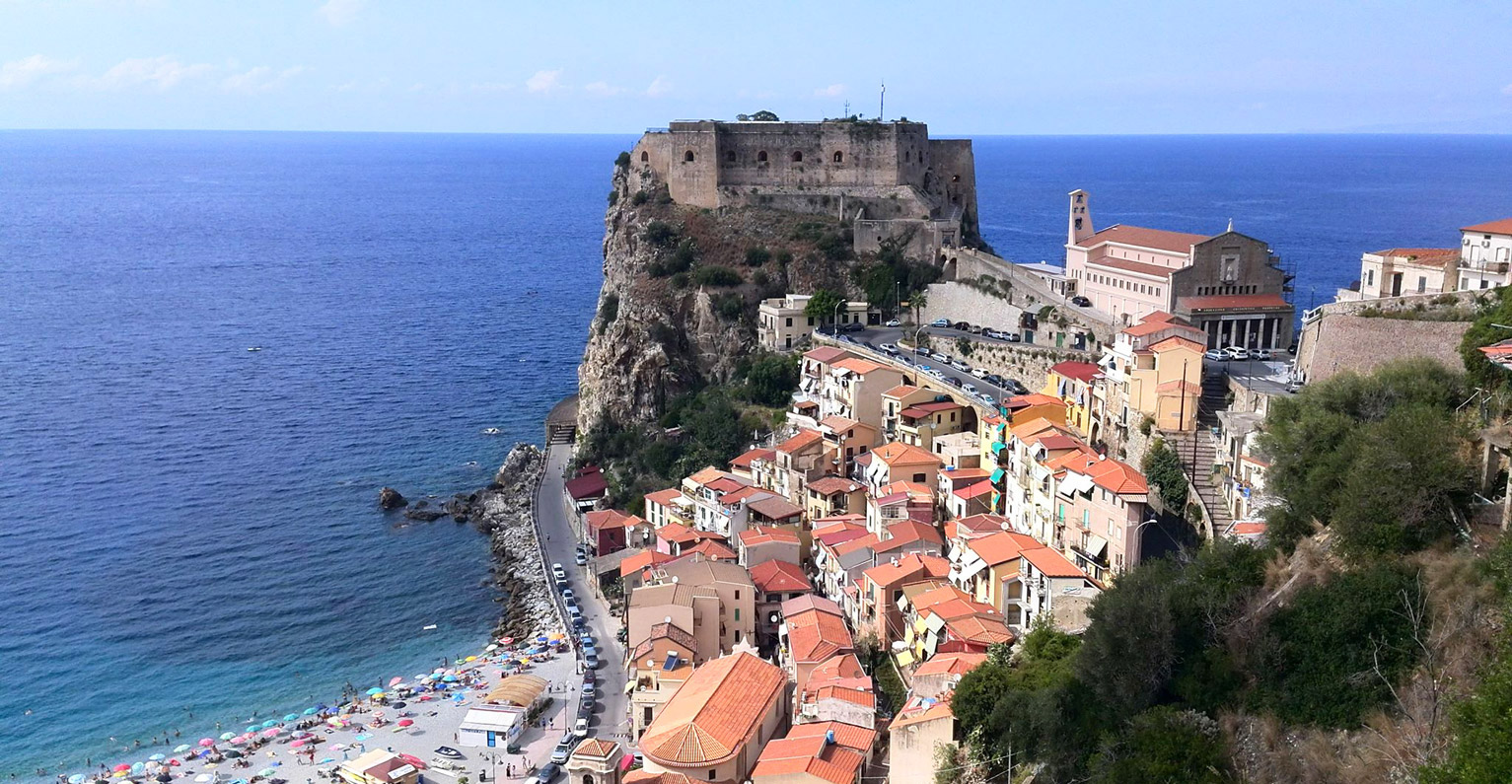
Palmi
Overlooking an authentic natural terrace, with the protective and constant presence of Monte Sant’Elia, Palmi is reflected in the Tyrrhenian Sea immersed in a natural landscape in the context of unparalleled beauty, offering the eye the privilege of reaching as far as Sicily and the Aeolian islands. It includes an appreciated seaside resort, which finds its emblems in the famous "scoglio dell'ulivo" located in the locality of Tonnara and in the beach of Rovaglioso (Porto Oreste), a natural cove included among the most beautiful in Italy by Legambiente, this town owes its name to the many palm trees present throughout the centuries in the territory. What makes this location even more interesting is the rich gastronomic tradition, which, together with the typical Mediterranean influences, combines succulent first courses such as "pasta china" (oven baked pasta full of various ingredients) or the "struncatura with anchovies and toasted breadcrumbs" and then, of course, swordfish, silver scabbardfish, and stock fish. Among the prominent events, the festival in honour of the Madonna della Lettera is very important, characterised by the evocative procession of the "Varia", a votive machine carried by the faithful along the streets of the town.
Bagnara Calabra
Going further south, about 15 kilometres from Palmi, visitors are welcomed by Bagnara Calabra. Warm and sunny, this small town is considered the gem of the Costa Viola crown, thanks to the beauty of its large beach and crystal-clear sea, a favourite destination for many tourists every year. Despite modernity, Bagnara still preserves the soul of the old fishing village where fishing, specifically swordfish and tuna, is one of the main activities. A soul perfectly preserved in the glimpses of the historic Marinella district where the characteristic Torre Ruggiero from the 15th century is located in a dominant position. The historic centre with its little churches, the streets animated by the fishmongers and the typical restaurants where you can taste the cuisine linked to the best gastronomic maritime tradition in which the most important is the swordfish, but also the confectionary embellished by the superlative nougat made according the most rigorous artisan standards even today.
Scilla
A little more than ten minutes from the Bagnara, continuing south, the “journey of Ulysses” still reserves a new and overwhelming encounter: Scilla. The undisputed pearl of the Tyrrhenian coast, the town has always renewed its charm, remaining forever in the heart of every visitor. Indicated as one of the most beautiful and characteristic villages of Italy, Scilla combines the timeless charm of the seaside village of Chianalea, the “little Venice”, with the characteristic little houses almost immersed in the sea, the most frequented part the Marina Grande that extends for almost a kilometres of beach under the severe but reassuring gaze of the imposing Castello dei Ruffo. The space offered by the San Rocco square, in the upper part of the town, from which it is possible to enjoy a breath-taking view of the Strait, has a great impact on the landscape. Simple but rich in taste is also the cuisine of the place that ranges from the typical features of the sea such as swordfish and silver scabbard fish, to the delicacies linked to the tradition of the nearby mountains such as sautéed beans with red onion and ‘nduja or baked broccoli.
